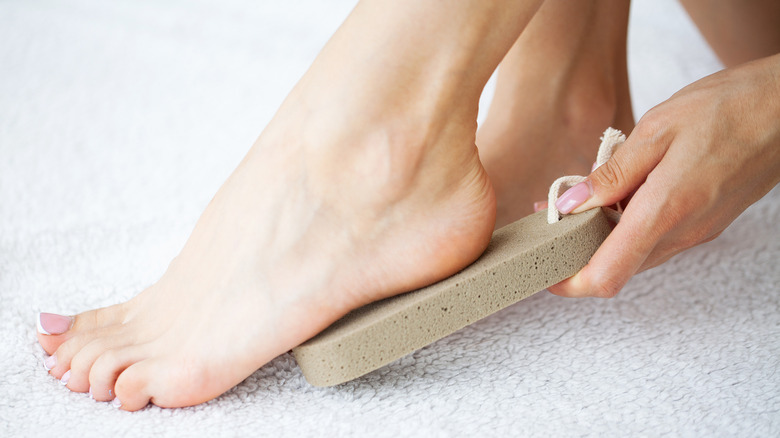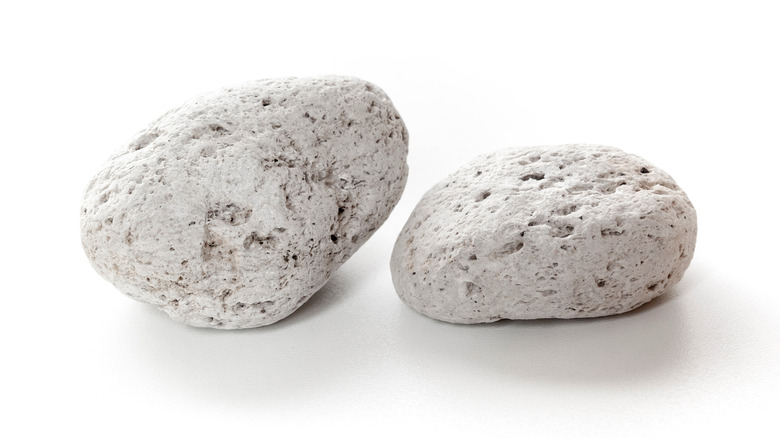You've Been Using A Pumice Stone Wrong This Whole Time
Your feet carry you every day, and in doing so, they often build up dead skin and callouses. If you've gotten a pedicure in the past or regularly care for your feet, you've probably used a pumice stone. Prevention reports that people started using these exfoliation devices around 100 B.C., so if you've used one, you're in good company. You might think you know everything there is to know about getting your feet silky smooth by scrubbing away the dead skin cells and washing them down the drain, but you might be surprised if you think you have it all down packed.
This tool can help you keep your feet healthy. "The benefits of using a pumice stone [are] that you can gently but effectively slough off dead skin and callused skin to reveal softer skin," Dr. Caroline A. Chang told Prevention. Often made of lava stones, pumice can help smooth away rough spots on your soles, but it is essential that you use this tool correctly. Not just everyone should use a pumice stone to make their feet softer, Foot and Ankle warned. For example, if you have diabetes or poor circulation in your feet, that could lead to reduced sensation, making it difficult to tell if you've been too vigorous in your scrubbing. If that sounds like you, then you should check with your doctor before using a pumice stone.
Otherwise, read on to find out how to use this tool properly.
Here's how to properly use a pumice stone
You can't simply start scrubbing away at your rough heels with a pumice stone. According to Dr. Powers Foot and Ankle, to properly use a pumice stone, you must begin by soaking your feet in warm, soapy water for 5-10 minutes. You can use this time to relax and rest before getting to work exfoliating your feet. After soaking your feet, you should dip your stone into the basin of water and begin gently rubbing your feet to remove the dead skin and soften callouses. Be sure you keep the pressure light and do not grind away at your problem areas to ensure you don't damage your soles.
When you're finished removing the skin, you should dry your feet being careful not to rub them. When they're dry, it's time to apply a high-quality moisturizer to soften your skin further. After you're finished with your feet, it's time to clean your pumice stone. Ana Cristina Laureano, M.D. explained why in Prevention. She said, "pumice stones are very porous and, after using, can accumulate your dead skin cells in [its] pores. Thus, it is important to wash and rinse your stone after you use it."
If you take your time, you can gently remove callouses and dead skin from your feet without causing any damage.

